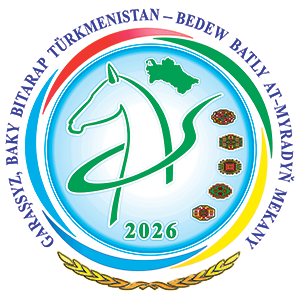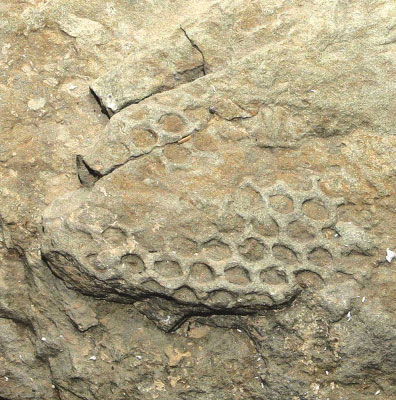Rock sample with imprints of an unknown ancient organism entered the collection of the State Museum State cultural center of Turkmenistan.
The find was discovered by environmental scientist Valery Kuznetsov in Western Kopetdag, at the foot of the Syunt-Khasardag ridge, in in the vicinity of the city of Magtymguly.
According to representatives of the Museum, in this area common Marine sedimentary deposits of the Upper Cretaceous, whose age is
60-80 million years. However, previously such prints were not met on the territory of our country. New exhibit with the Museum's scientific specialists are studying with interest.
The prints on the samples look like hexagon grids with a diameter of 8-12 mm and resemble a honeycomb, occupying plot with an area of 130-150 cm2.
What could have left such geometrically correct patterns, the candidate helped to solve biological sciences, scientific employee of the Paleontological Museum of the Russian Academy of Sciences Dmitry Grigoriev.
The ordered hexagonal structure suggests biological origin of the object,” the scientist reflects. By modern ideas, such traces could have been left primitive organisms, the role of which sponges claim, algae and large deep-sea protists.
The fossilized result of the life activity of a given organism is similar with Paleodictyon Meneghini, named after the discoverer - paleontologist Giuseppe Meneghini, who in 1850 discovered in Mesozoic sediments and classified strange footprints. A grid of hexagons similar to a honeycomb, covered the stone. To date, such finds are known several hundred.
Currently in the State Museum of the State cultural center of Turkmenistan presents an extensive collection of paleontological objects - petrified trunk 270-million-year-old tree, fossilized forms prehistoric sea urchins and lilies, ammonites, belemnites, bivalves and gastropods, whole shark teeth, corals, dinosaur footprint and ferns related to Mesozoic era.
Fossilized traces of a one-humped species date back to the Cenozoic era camel, Turkmen elephant skull, Khazar elephant tooth, enamel Southern elephant teeth, ostrich egg shells and other exhibits.
The new exhibit will also take place among other fossils.








